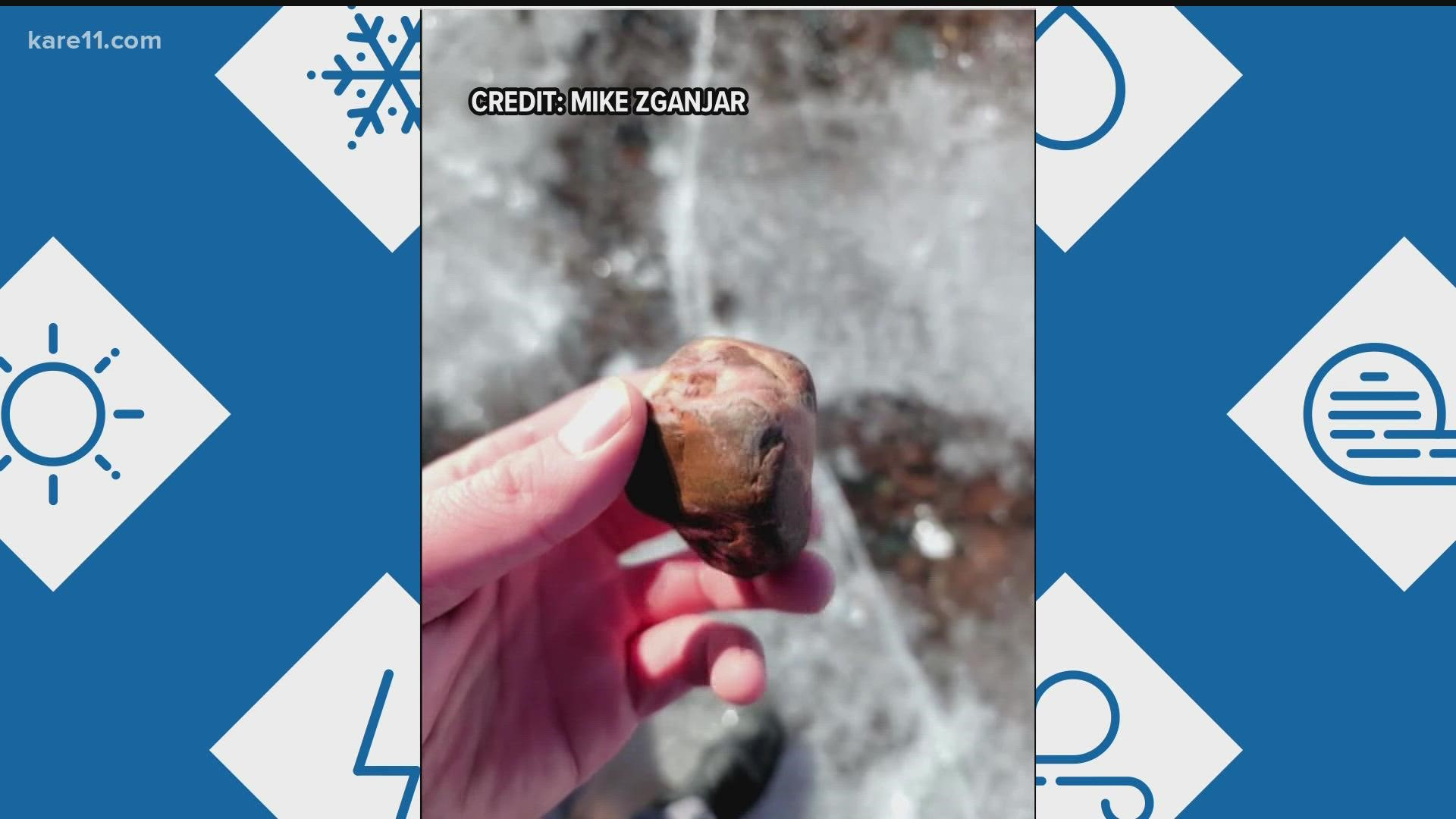STANDISH, Mich. — Editor's Note: The video above originally aired on Feb. 28.
Bridget Wheelock knelt onto the frozen surface of Lake Huron's Saginaw Bay, reached a gloved hand into the frigid water below and pulled out a large chunk of ice.
“There’s a little bit of prism effect. Right here,” the Central Michigan University researcher said last week, pulling the block closer and pointing. “Can you see that?"
“Oh, yeah,” said her colleague, Matt Sand, leaning in for a look before holding open a collection bag as Wheelock slid the fragment inside.
They were members of more than a dozen crews from U.S. and Canadian universities and government agencies who ventured onto the frozen Great Lakes to gather samples and data.
The field studies over the past few weeks — a collective effort known as the “Winter Grab” — were intended to boost knowledge of what happens in the five lakes when they're covered partially or completely with ice.
“We got everything that we set out to get. The group as a whole did very well,” said Don Uzarski, director of Central Michigan University's Institute for Great Lakes Research, who oversaw the sampling work by Wheelock and Sand.
Lake scientists long have considered winter a season when aquatic activity slows. Most do their field studies at other times of year.
But researchers now think more is going on in the bitter depths than previously believed, including activity influenced by climate change.
“All of these different components of the ecosystem ... we always measured during the summertime, but we really don’t know what’s taking place out there in the wintertime at all," Uzarski said.
“You can't take half the puzzle and figure out what it looks like. You have to put the whole thing together.”
Saginaw Bay, off Michigan's eastern coast, is a favorite of anglers in pursuit of sport fish, primarily perch and walleye. Their fortunes have risen and fallen over the past half-century amid efforts to help the Great Lakes recover from industrial pollution, habitat loss, nutrient overloading and exotic species infestations.
Uzarski and fellow researchers study the bay's coastal wetlands, a stopover for migrating species such as great blue herons and sandhill cranes. The area is plagued by phragmites, an invasive reed that covers thousands of shoreline acres. Toxic algae blooms have formed in the waters, likely a result of farm fertilizer runoff.
For the recent excursion onto the icy bay, Wheelock and Sand affixed cleats to their boots and lugged a sled and wheeled cart loaded with tools and supplies. Temperatures hovered around freezing but a driving wind and slushy rain made it seem much colder.
Stopping nearly a tenth of a mile (0.16 kilometer) offshore, they used an auger, saws and other tools to bore holes through ice nearly 15 inches (38 centimeters) thick. In addition to their ice observations, they measured snow density and scooped samples from the shallow water.
The mission — and others around the lakes — will produce data on light penetration through the ice.
“Light is driving photosynthesis, which is the energy for the entire ecosystem,” Uzarski said.
Scientists also will analyze the samples for organic matter, particularly tiny plant and animal plankton at the base of aquatic food chains.
The Winter Grab was organized with a sense of urgency: Great Lakes ice cover has been shrinking since the 1970s. Some experts say it may become increasingly rare as the climate heats up.
That could have many ripple effects beyond devastating the ice fishing industry, Uzarski said.
Without ice, there's more winter evaporation. If that lost water isn't replaced by rain or snow, lake levels drop — with potential implications for wetlands, nutrient concentrations and fish.
“It is all connected,” Uzarski said.
Watch more WeatherMinds:
Watch the latest deep-dives and explainers on weather and science in our YouTube playlist:

